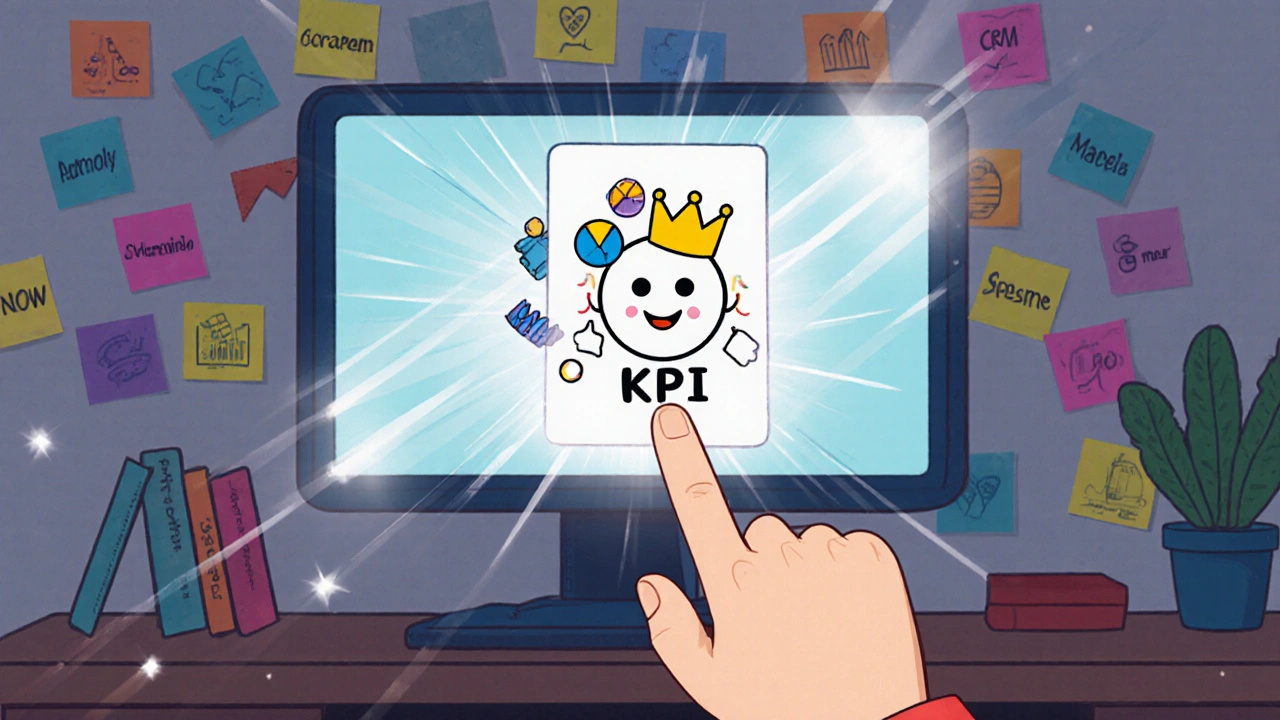How to Create Effective Glossaries and Reference Materials for Online Courses
 Apr, 30 2025
Apr, 30 2025
Ever opened an online course only to get stuck because of a term you’ve never heard before? That’s not your fault. It’s the course’s fault. Too many courses assume you already know the jargon. But real learning doesn’t start with assumptions-it starts with clarity. A well-built glossary and reference section can turn confusion into confidence. And it’s one of the most overlooked tools in online course design.
Why Glossaries Matter More Than You Think
When learners hit a word they don’t understand, their brain doesn’t just pause-it shuts down. A 2023 study from the University of Michigan found that learners who had access to clear, in-context definitions completed modules 37% faster and reported 52% higher satisfaction. That’s not magic. That’s cognitive load reduction.
Think about it: if you’re taking a course on digital marketing and you don’t know what a ‘funnel’ is, you’re not learning marketing-you’re trying to decode a language. A glossary isn’t just a word list. It’s a bridge between what the learner already knows and what they need to learn.
And it’s not just for beginners. Even experienced learners benefit. Terms like ‘KPI,’ ‘Cohort Analysis,’ or ‘Microlearning’ mean different things in different industries. Your glossary gives everyone the same starting point.
What Makes a Glossary Actually Useful
Not every glossary is created equal. A list of terms with one-line definitions? That’s a dictionary. A useful glossary is built for learning.
Here’s what works:
- Contextual examples: Don’t just say ‘SEO’ means search engine optimization. Say: ‘SEO is the process of improving your website so it ranks higher on Google. For example, adding keywords to your product pages helps more people find your store.’
- Real-world connections: Link terms to tools, actions, or outcomes. ‘CRM’ isn’t just ‘customer relationship management.’ It’s ‘the system you use to track customer emails, purchases, and support tickets-like HubSpot or Salesforce.’
- Visual cues: Use icons or color-coding. A lightbulb icon next to ‘best practice,’ a warning sign next to ‘common mistake.’
- Hyperlinks: Every term in the glossary should link to where it’s first used in the course. Click ‘conversion rate’ in the glossary? It takes you straight to the lesson where it’s explained in action.
One course I reviewed had a glossary entry for ‘A/B Testing’ that included: a one-sentence definition, a real example from an e-commerce brand, a screenshot of a testing dashboard, and a link to the video where the instructor ran the test live. That’s the level of detail that sticks.
Building Reference Materials That People Actually Use
Glossaries handle definitions. Reference materials handle everything else: formulas, templates, checklists, step-by-step workflows. These are the cheat sheets learners print out, save to their desktop, and keep open while they work.
Here’s what to include:
- Templates: A fill-in-the-blank email sequence, a project timeline, a budget spreadsheet. Don’t just describe them-give them.
- Checklists: ‘5 Steps to Launch Your First Landing Page’ or ‘10 Things to Check Before Publishing a Video.’
- Formulas and equations: If your course involves math, data, or metrics, write them out clearly. Don’t assume they’ll remember from high school. Show: ‘ROI = (Gain - Cost) / Cost × 100’
- Quick-reference guides: A one-page summary of key terms, tools, and actions. This is the ‘emergency kit’ for learners who need to recall something fast.
One course on data analysis included a downloadable Excel template with pre-built formulas for calculating standard deviation and correlation. Learners didn’t just watch the video-they downloaded it, plugged in their own data, and used it at work the next day. That’s impact.

Where to Put These Materials in Your Course
Don’t bury them in a PDF at the end. Place them where learners need them.
- At the start of each module: Include a quick reference box with 3-5 key terms they’ll encounter. This primes their brain.
- As pop-ups or hover cards: In video lessons, when a term appears, let learners hover over it to see a definition without leaving the video.
- In a dedicated ‘Resources’ section: Organize it like a library: Glossary, Templates, Formulas, Tools, Further Reading.
- As downloadable PDFs: Make sure they’re mobile-friendly and print-ready. Many learners will save them to their phones.
One course on project management had a sticky note icon next to every new term in the video transcript. Click it, and a small card popped up with the definition. No scrolling. No searching. Just instant clarity.
Common Mistakes to Avoid
Even good intentions lead to bad glossaries. Here’s what to skip:
- Too many terms: Don’t define every word. Only define the ones that are critical, confusing, or industry-specific. If it’s common knowledge (like ‘email’ or ‘website’), skip it.
- Circular definitions: Don’t say ‘SEO is search engine optimization’ and then define ‘optimization’ as ‘making something better for search engines.’ That’s useless.
- Out-of-date info: If your course mentions ‘Facebook Ads Manager,’ but it’s now called ‘Meta Ads,’ update it. Learners notice when materials feel stale.
- One-size-fits-all: A glossary for a beginner’s course shouldn’t be the same as one for an advanced course. Tailor depth to the audience.
- Ignoring accessibility: Make sure your glossary works with screen readers. Use proper headings, alt text for icons, and readable fonts.
How to Test if Your Glossary Works
Don’t guess. Test it.
Ask five people who fit your target audience to take a short module without any prior knowledge. Give them your glossary. Then ask:
- Did you understand the terms as you went through the lesson?
- Did you use the glossary? How often?
- Was there a term you still didn’t get after checking the glossary?
- Would you use this glossary again in the future?
If even one person says they didn’t use it, or didn’t understand a term, fix it. Repeat until 90% of testers say the glossary helped them learn faster.

Tools to Build Glossaries and Reference Materials Faster
You don’t need to code anything. Here are tools that make it easy:
- Notion: Create a linked database of terms with definitions, examples, and links to course modules. Export as PDF.
- Google Docs: Use the built-in comment feature to add hover-style definitions (just link them in the text).
- Canva: Design clean, visual one-pagers for checklists and templates.
- LearnDash or Thinkific: These platforms let you embed glossary terms as pop-ups directly in your lessons.
- Obsidian: If you’re tech-savvy, use bidirectional linking to connect terms across your course content automatically.
The goal isn’t to make it fancy. It’s to make it fast. Learners don’t want to search. They want to click and understand.
When to Update Your Materials
Reference materials aren’t set-and-forget. They decay.
Update them when:
- A tool changes its name or interface (e.g., Google Analytics 4 replaced Universal Analytics)
- A new industry standard emerges (e.g., GDPR replaced older data rules)
- Learners keep asking the same question in the forum
- You notice a drop in quiz scores on a specific topic
Set a reminder every 6 months to review your glossary. Even 20 minutes can catch outdated terms and broken links.
Final Thought: Clarity Is the Ultimate Learning Tool
Great content doesn’t have to be flashy. It just has to be clear. A well-designed glossary and reference section removes friction. It turns ‘I don’t get this’ into ‘Oh, that’s what that means.’
When learners stop struggling with language and start focusing on ideas, that’s when real learning happens. And that’s the difference between a course that’s forgotten and one that’s remembered-and used.
What’s the difference between a glossary and a reference sheet?
A glossary defines terms-like ‘What is CRM?’ or ‘What does KPI stand for?’ A reference sheet gives you tools to use-like a template for a sales funnel, a checklist for launching a course, or a formula for calculating ROI. One explains words. The other gives you something you can apply.
Should I include every term I use in the course?
No. Only include terms that are: 1) not commonly known by your target audience, 2) critical to understanding the lesson, or 3) used repeatedly. If it’s a word everyone knows (like ‘video’ or ‘download’), skip it. Overloading your glossary makes it harder to use.
Can I use AI to build a glossary?
Yes-but don’t rely on it alone. AI can generate a list of terms and basic definitions from your script. But it won’t know which terms confuse your learners or how to connect them to real examples. Always review and add context yourself. A glossary built by AI without human input often feels robotic and unhelpful.
How detailed should a definition be?
One sentence for the core definition, then one or two more for context. For example: ‘Landing page: A standalone web page designed to convert visitors into leads. It usually has a headline, a form, and a clear call-to-action-like ‘Download the Free Guide.’’ That’s enough. Too much detail turns it into a textbook.
Do learners actually use glossaries?
Yes-if they’re easy to find and useful. Courses with integrated, clickable glossaries see 3x more usage than those with static PDFs. Learners use them while watching videos, taking quizzes, or doing assignments. If your glossary is buried or hard to navigate, they won’t use it. Make it fast. Make it visible.
What’s the best format for a reference sheet?
PDF or a printable webpage. Keep it to one or two pages. Use bold headers, bullet points, and icons. Include the most-used formulas, steps, or templates. Don’t write paragraphs. Write actions: ‘Step 1: Log in to your dashboard. Step 2: Click ‘Export Data.’’
Start small. Pick one module. Build a glossary for just 5 key terms. Add one reference template. Test it. Then expand. The goal isn’t perfection-it’s progress. Every term you clarify is one more learner who finally gets it.